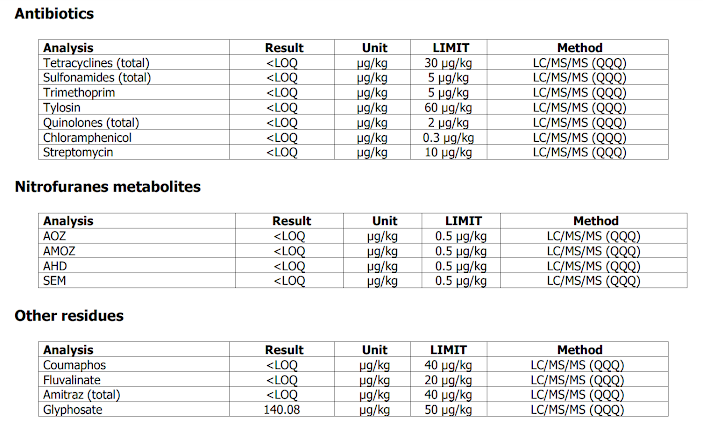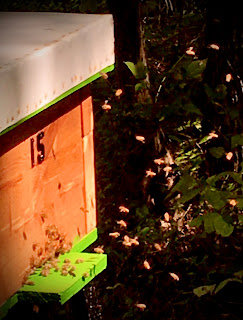Traditional Farming in Albania
In October 2011, I had the pleasure of visiting Albania for about five days with a good friend from Kosovo, Naim Shala. My purpose in going to Albania was to photograph, but I quite unexpectedly learned a lot about the traditional farming methods and organic agriculture that are widely practiced there today. Since I had not visited Albania since 2002, I was quite unprepared for the amazing changes that have taken place there over the intervening eight years!
When I arrived at the Tirana International Airport in 2002, it was truly a "third world airport" - small, dirty, crowded, chaotic, and still looking very much the communist-era concrete block terminal it was when it was built by Enver Hoxha, the long-serving dictator of communist Albania. In 2011, though, it was totally different! This time, I stepped into a modern, light, airy, glass and steel structure that looked like it had been airlifted from Europe, replete with cafes, shops, baggage handlers, taxis, and all the amenities one would expect in a "first world airport."
The surprises did not stop there, however. Exiting the airport, Naim turned his car into a modern, four-lane paved highway with frequent gas stations, hotels, stores, "7-11" type convenience stores, and all the signage and stop lights and traffic police you could hope to have. Everything was clean, orderly, and looked like Turkey. When I say Albania "looked like Turkey," I mean that as a compliment as Turkey is a beautiful, well-developed, economically prosperous country where I would gladly live.
Naim and I drove south, always on paved roads - something we could not do in 2003. Everywhere we stopped, whether hotels or restaurants, electricity was a constant and services were good. When we drove through Albania in 2003, restaurants usually served by candlelight and it was only in the big cities that power was constantly on.
I say all this to put the visit into context and to put the next part of this article into context. In spite of this economic development, and the improvement in the infrastructure, farmers are still overwhelmingly using traditional methods of farming. Small tractors, usually of Chinese or Indian manufacture (as opposed to the old Russian tractors that were used in communist times), have replaced draft animals on many farms, but not completely. Even where they have, though, farms are still highly diversified, of mostly small and medium sizes, and they do not rely on chemical inputs and GMO seeds to grow their crops.
In every town and village, farmers sell their produce in traditional farmers' markets, as they have for centuries. The offerings on hand, though, are incredible! True heritage tomatoes, deep red in color, heavy and solid, with a taste that must be experienced as words will not do it justice, were the norm. Carrots, deep orange and bursting with flavor, glowed on the tables. Cabbages, heads of lettuce, onions, and dozens of other fruits and vegetables could be found everywhere! And what passes for "normal" in Albania, would be proudly displayed and sold at a premium price in the United States at Whole Foods, Trader Joe's, or at upscale farmers' markets in the biggest cities.
Albania is not famous for its olive oil, but it should be. Centuries-old olive trees grow by the millions across Albania. They are so highly valued in Albanian culture that there is even a tradition that in the time of Skenderbeg (1405-1468) a young man had to plan ten olive trees in his youth and cultivate them so they will be ready for him and his new wife to begin harvesting when they married. Since it typically takes about five years for an olive tree to begin bearing fruit, this meant that a young man would have a small orchard bearing fruit by the time he married in his teens. There are around four million olive trees in cultivation in Albania today, but the Albanian government wants to plant another twenty million as the hillsides can sustain far more and the quality of the oil is superb.
We visited several old churches in villages throughout the main olive-producing area on the Adriatic coast. Incredibly old trees, some of them as much as 18 inches or two feet in diameter, were obviously hundreds of years old, yet they continue bearing huge quantities of olives as they are cultivated largely by hand by successive generations of the same family. Harvested by hand at exactly the right time, the olives are generally pressed in small presses and not in large, industrial presses. Every step of the process is controlled by experience, not data. The process is more art than science, with the result that final product is truly a masterpiece.
This is where eating in Albania really becomes special. When you are in a home or restaurant, you can bet the olive oil is not only local, but it is also absolutely pure and unadulterated. You will not find yellow olive oil in Albania; instead, it is a rich green color, reflecting the natural purity of a freshly squeezed olive. Pour that over organic vegetables grown from saved, heritage seeds in the organic-rich, dark soils of Albania, and you have a taste treat that is hard to match anywhere!
Meat is another treat. We stopped at one restaurant located on the beach in the southern part of the country. As we approached the little restaurant, we could see chickens running around the yard, pecking at bugs in the grass and sand, obviously well-fed and exercised in the fresh air where they live their entire lives. We ordered chicken and the waiter told us to come back in about a half hour. So, off we went to explore the beach and enjoy the splendid quiet and isolation of a deserted beach in the cool, fall air.
Upon returning to the restaurant, we were served the finest grilled chicken dish you can imagine. The restaurant's yard was now short one chicken, but the meat was at its freshest, never frozen or shipped, and eaten within an hour of slaughter. And the chicken was free range, organic, and humanely raised.. Frankly, I have no doubt it was also humanely slaughtered. After all, an ax and a tree stump or a neck wringing are both more humane than the mass, mechanized slaughtering that is done by machines to animals by industrial food processors. I am sure there were no hormones or antibiotics in the meat, but only natural inputs gathered by the chicken in the course of a natural life lived according to nature's way. And the taste of the meat was testament to the superiority of this way of farming.
Goat, lamb, and beef were all similarly served up. Meat is seldom frozen, but always freshly harvested by small-scale butchers on or near the farms. As in most traditional cultures, people buy meat in small quantities as they need it, so it can be served fresh and close to the time of slaughter. Truly, we in West need to learn again the methods we have lost and return to these proven methods that provide better incomes for farmers, better health for consumers, and a more beautiful, humane, and healthy countryside with living, active communities.
Eggs in Albania, much like the eggs in Ethiopia, had richly-colored yolks of a color you will seldom find in American markets. Omelets at our hotel were dark yellow in color with a taste to match. These eggs - like virtually all the eggs harvested in Albania - came from chickens that are free-ranging and free-feeding. Eggs in Ethiopia were smaller, but much richer in color and taste, due no doubt to the natural food sources available to the chickens there.
Virtually every house in Albania, at least in the villages and countrysides, has a solar-powered hot water heater on its roof. There are literally millions of these, perched on the roof of every house. They are obviously not expensive as everyone seems able to afford them. But the total savings on electricity not used for heating water must be huge in a country that has historically struggled to meet the power needs of its population. These small units are of Turkish manufacture and easily supply the hot water needs of an average family with just one unit. If such solar units were used across America, it would surely do a lot to reduce our dependence on fossil fuels, especially Middle Eastern oil.
My travels have taken me to dozens of countries and I have been blessed to live in nine other countries outside the United States. In all those countries, I have seen many farmers using methods that are often traditional, usually organic, often based on draft power, but always producing food that is bountiful, healthy, tasty, and beautiful to look at. Farmers in these countries practice diversified farming, usually on a small scale, mix crops and livestock, and minimize chemical and GMO inputs. They do not buy into the industrial agriculture system and, as a result, maintain their financial and professional independence. They are also usually skilled farmers who enjoy farming and see it as an honored profession, one that requires constant learning, and one that requires the farmer to work in partnership with - and not antagonistic to - nature.
When I see how they work, the quality of their home and community life, how their land fares year after year, how they work in partnership with - and not in opposition to - nature, I have to ask myself who is more advanced? Them with their traditional methods or us with our so-called "advanced" industrial agriculture model?

